HISTORY
Modbury and its surrounding area is steeped in the history of England. From the wilds of Dartmoor to the home of Great Britains maritime strength at Plymouth Royal Dockyard. The Moor may look like a natural place but, if you look more closely, you can see traces of past lives etched into the land itself. People have been using Dartmoor for over 10,000 years, and the signs of those who have settled here, farmed the land, and dug for resources such as tin, iron, silver and granite are scattered across the landscape.

The name Modbury stems from the Saxon 'Moot Burgh' meaning a meeting place and markets have been held here since that time.
Modbury is found in the Domesday Book where the five manors of the Parish are listed:
- Motberia (Modbury)
- Silfestan (Shilston)
- Comba (Spridlescombe)
- Lega (Leigh)
- Orcartona (Orcheton)
At noon, the market bell (the site still exists in the town today) used to announce the start of the weekly market which sold produce from local farms. The market became the focal point of the area when, in 1774, a cattle and livestock market was established.
These markets took place on the second Monday of each month around the streets of Modbury. Sheep pens were set up outside the White Hart and pigs were outside the Exeter Inn.
The Industrial Revolution owes rural South Hams a great debt.
The pioneering engineer, Thomas Savery (1650 - 1715) was born at Shilston. He invented the first, practical and commercial water pump. He invented the first commercially used steam powered device, a steam pump which is often referred to as an "engine". Savery's "engine" was a revolutionary method of pumping water, which solved the problem of mine drainage and made widespread public water supply practicable.

Thomas Newcomen (1664 - 1729) was an English inventor who created the atmospheric engine, the first practical fuel-burning engine in 1712. He was an ironmonger by trade and a Baptist lay preacher by calling. He was born in Dartmouth, Devon, England, to a merchant family and baptised at St. Saviour's Church on 28 February 1664.
William Cookworthy (1705 - 1780), born at Kingsbridge, was an English Quaker minister, a successful pharmacist and an innovator in several fields of technology. He was the first person in Britain to discover how to make hard-paste porcelain, like that imported from China. He subsequently discovered china clay in Cornwall.
Charles Babbage KH FRS (1791 – 1871) was a mathematician, philosopher, inventor and mechanical engineer, and is considered by some to be the "father of the computer", inventing the first mechanical computer that eventually led to more complex electronic designs, though all the essential ideas of modern computers are to be found in Babbage's analytical engine. His varied work in other fields has led him to be described as "pre-eminent" among the many polymaths of his century.
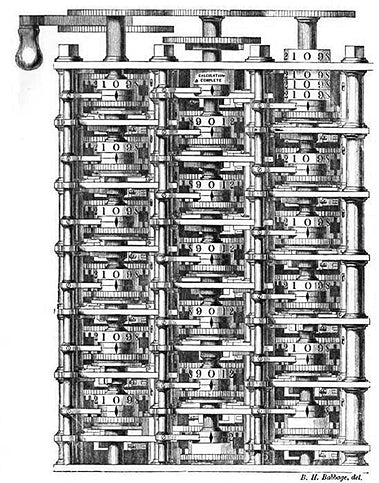
Parts of Babbage's incomplete mechanisms are on display in the Science Museum in London. In 1991, a functioning difference engine was constructed from Babbage's original plans. Built to tolerances achievable in the 19th century, the success of the finished engine indicated that Babbage's machine would have worked.
The nearby port city of Plymouth was the departure point for the Pilgrim Fathers, the first English settlers of the Plymouth Colony in Plymouth, Massachusetts. Their leadership came from the religious congregations of Brownist Puritans who had fled the volatile political environment in England for the relative calm and tolerance of 17th-century Holland. They held Puritan Calvinist religious beliefs but, unlike other Puritans, they maintained that their congregations needed to be separated from the English state church. They were concerned that they might lose their cultural identity if they remained in the Netherlands, so they arranged with investors to establish a new colony in America. The colony was established in 1620 and became the second successful English settlement in America, following the founding of Jamestown, Virginia in 1607. The Pilgrims' story became a central theme in the history and culture of the United States.

Pilgrim fathers setting sail from Plymouth
Modbury is ideally placed as an accommodation and touring base for access to the Medieval towns of Dartmouth and Totnes with their castles, harbours and shambles.

Totnes Castle
Exeter, 25 miles away, has impressive standing Roman city walls. Exeter Cathedral, dateing back 900 years, is one of England's most beautiful medieval cathedrals and one of the finest examples of decorated Gothic architecture in this country. It is most famous for its two Norman towers, impressive west front carvings and the longest unbroken stretch of Gothic vaulting in the world. Of note are the Minstrels' Gallery, the 15 Century Astronomical Clock, a complete set of Misericords and the highly decorated tombs, bosses and corbels. The library contains the famous 'Exeter Book' of Anglo-Saxon verse, the Exon Domesday and many other historical documents.
This magnificent Cathedral is a testament to the creativity, skill and devotion of those who built it.

Exeter Cathedral
Civil War Battle Sites
During the English Civil War (1642 - 1651) two battles were fought in Modbury. The first was on 18th November 1642. The Royalists (Cavaliers), under the command of Sir Ralph Hopton, the Sheriff of Devon and Sir Edmund Fortesque with a party of gentlemen, raised a local South Devon force who were mustered in Modbury, making it their headquarters. The Parliamentarian (Roundhead/Commonwealth), Colonel Ruthen, in command of four troops of Horse and about 100 Dragoons sallied out of Plymouth, via Ivybridge, to Modbury whereupon the Royalist soldiers promptly dispersed leaving their officers besieged in the Court House and Champernowne House. After this was set on fire they surrendered and were transported to Plymouth.
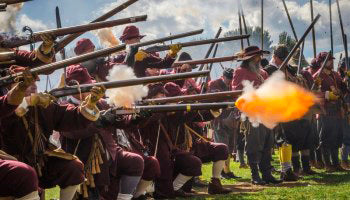
The second battle of Modbury commenced at the beginning of 1643. After the Royalists besieged Plymouth, a decision was made in Parliament to send a relief force. This Commonwealth force, numbering about 8,000 men, was concentrated at Kingsbridge.
An advance force was sent forward to the bridge at Aveton Gifford, east of Modbury, where about 2000 Royalists were holding the crossing. It was some time before they were driven back, field by field, retreating to Modbury where they set up a defensive position in the Court House.
The Commonwealth commander then set about reinforcing the bridge over the river Aune, in order that commonwealth canon were able to cross the bridge and be taken on to lay siege to the Royalist stronghold of Salcombe Castle (today known as Castle Point).
After heavy, bloody fighting in Modbury, the Royalists were compelled to retreat and escape down a sunken lane that turns south westwards from the church. It is called Runaway Lane to this day and is part of Modbury's network of beautiful walks.
Modbury Church
The first documented evidence of a church in Modbury was in 1084, known then as the Church of St. Mary. Churches were frequently established upon ancient Celtic pagan sites.
A charter of 1140 confirms the existence of a priory. This was a small cell comprising a Prior and two monks.
The church was rebuilt in 1300 and re-dedicated to St. George.
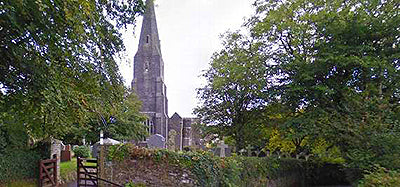
In 1442 Henry VI dissolved the priory and claimed 485 acres of land, using the revenues to help build Eton college.

A beautiful church, well worth a visit!
Famous Citizens
Modbury is the home of famous forebears, in particular Lady Catherine Champernowne, whose family gives its name to parts of the town, and who is the mother of Sir Walter Raleigh and Sir Humphrey Gilbert.
Sir Walter Raleigh (c. 1552 (or 1554) – 29 October 1618), was an English landed gentleman, writer, poet, soldier, politician, courtier, spy and explorer. He was cousin to Sir Richard Grenville and younger half-brother of Sir Humphrey Gilbert. He is also well known for popularising tobacco in England.
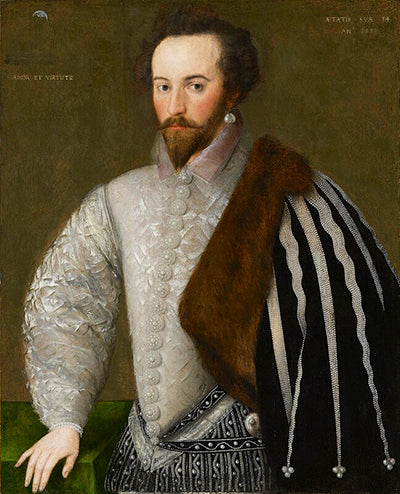
Sir Walter Raleigh
He rose rapidly in the favour of Queen Elizabeth I and was knighted in 1585. Raleigh was instrumental in the English colonisation of North America and was granted a royal patent to explore Virginia, paving the way for future English settlements.
In 1594, Raleigh heard of a "City of Gold" in South America and sailed to find it, publishing an exaggerated account of his experiences in a book that contributed to the legend of "El Dorado". After Queen Elizabeth died in 1603, Raleigh was again imprisoned in the Tower, this time for being involved in a plot against King James I, who was not favourably disposed towards him. In 1616, he was released to lead a second expedition in search of El Dorado. During the expedition, men led by his top commander ransacked a Spanish outpost, in violation of both the terms of his pardon and the 1604 peace treaty with Spain. Raleigh returned to England and, to appease the Spanish, he was arrested and executed in 1618.
Sir Humphrey Gilbert was a renowned explorer, famous for his attempts to find the Northwest Passage. He sailed from Plymouth on June 11th, 1583, and on August 3rd arrived at St. John’s, Newfoundland, which he claimed in the name of Queen Elizabeth I. Although he drowned at sea on this expedition, his exploits inspired many adventurers and explorers over the centuries.
The departure of families from Modbury, and District, to the Americas has been continuous from the mid-16th Century through to the mid-20th Century. A famous name to make the journey was the local family of "hatters" called Stidson who morphed into STETSON in the USA, world famous for their Stetson hats!
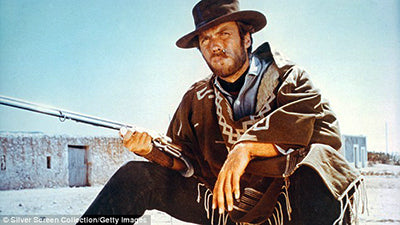
The man with no name... but wearing a Stetson
World War One
The war to end all wars...
The memorial to the fallen is on Church Street at the entrance of the pathway leading to the Church. There are over 30 names recorded there, including that of the first of Modbury’s servicemen to fall in the War, CPO James Barnard T Kennard, whose edited story is related below.
James joined the Royal Navy in 1899 and is listed as a Royal Navy Blacksmith aged 27 in 1901 census and rose to the rank of Chief Petty Officer (CPO) at the time of his death.
Early in August 1914 CPO James Kennard left his home in Modbury to join his ship, the armoured cruiser, HMS Monmouth.

HMS Monmouth, Armoured Cruiser
On 6th August they set sail for Chile, via Cape Horn, to investigate German seaborne trade that had increased during the War.
For HMS Monmouth, along with the 3 other ships of her squadron, the war was about to become real when, on the evening of 1st November 1914, they found the German squadron of the Spee, Scharnhorst, Gneisenau, Leipzig, Dresden and Nurberg; all heavily armed, modern capital ships with crack crews. The Germans engaged the four ships of HMS Monmouth’s squadron, who were silhouetted against the evening sun, with rapid and accurate gunfire. HMS Good Hope suffered a devastating magazine explosion and sank soon afterwards with all hands.
HMS Monmouth was also in a bad way, shot up, on fire and listing to port. Closing in, the Nurberg finished her off with gunfire at point blank range and all hands were lost. The pride of the Royal Navy had been dented by this action in the south Atlantic and Modbury had its first casualty of the War – Chief Petty Officer Kennard.
His name is carved on the war memorial and recorded in the Church. A memorial to all those who perished can be found in Christ Church Cathedral in Stanley, the capital of the Falkland Islands.
Unfortunately, 3 years later, his son, Sidney, was killed in action in Mesopotamia (modern Iraq) on 3rd February 1917.

British troops crossing the river Tigris in Mesoptamia (Iraq)
The centenary of the end of the Great War was comemorated in 2018 by the town with an exhibition 'Modbury Remembers'. This has now become a comprehensive online historical facility and database, accessible below:
World War Two
The Second World War affected the area heavily. From the early blitzkrieg raids by the Luftwaffe on Plymouth, Torquay and rural areas to the sequestration of large areas of the South Hams for the billeting and training of American forces prior to the D-Day landings.
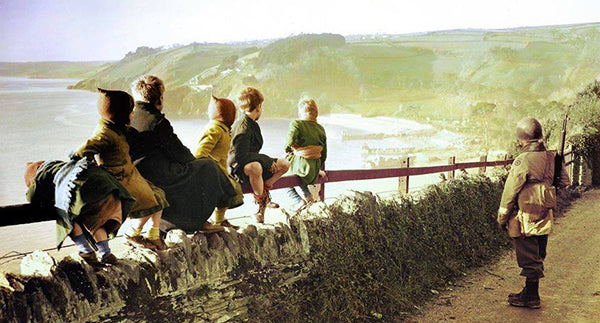
With the use of nearby Slapton Leigh as a rehearsal site for American landings on Utah beach, Modbury saw its fair share of GI's billeted around the town. The White Hart’s Assembly Rooms were commandeered and used as an US Army communications centre.
Aveton Gifford once again benefitted from warfare, previously reinforced three hundred years earlier in the Commonwealth period, as the American forces rebuilt and reinforced the bridge over the river Aune to carry their tanks and other heavy equipment to Slapton in preparation for Operation Tiger (a live fire rehearsal for D-Day)
The events surrounding Operation Tiger have been shrouded in mystery, confusion and denial, both by the American Pentagon and the Royal Navy, for many years. The use of the area reflected the lie of the land at Utah beach, since once you made the beach, you still had to cross an area of fresh water (Slapton Leigh). The story of the night of 28th April 1944 is riddled with fable and legend.
It is asserted that the assembled flotilla was spotted by a squadron of German E-Boats, operating out of Cherbourg, and that they infiltrated past the Corvette escort of HMS Azalea and unleashed torpedo’s and gunfire.
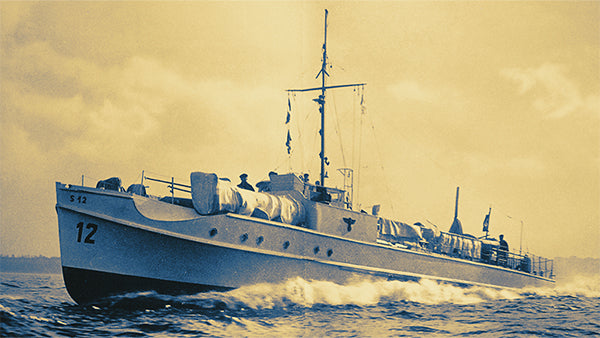
Kriegsmarine E-Boat
Such was the confusion vessels ended up firing on each other. For those who made the shore, it is also alleged they came under fire from the British Cruiser HMS Hawkins, as well as friendly fire from beach gun emplacements.

The Americans practice D-Day landings at Slapton Leigh
Whatever the truth, some 946 troops lost their lives that night and it was not until 1984, forty years on, that a Sherman Tank was recovered off the beach and the tragedy received the full glare of publicity. There is now an annual Memorial service at the site on the 28th April each year. It is well attended now by the last survivors, members of the families of the troops lost that night as well as local people.
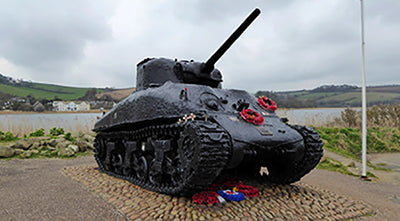
Sherman Tank Memorial at Slapton Leigh
Exercise Tiger Documentary
Twinning
The concept of twinning developed in Europe after the tragedies of World War II to promote: friendship, co-operation and mutual awareness between the peoples of Europe.
Modbury is twinned with Lanveoc, a town in north west Brittany, with a similar population and is roughly the same size as Modbury.
The French Naval Academy, the Ecole Navale, was founded in 1830 by King Louis-Philippe, is based in Lanveoc, and is responsible for training French naval officers. It could be said to the French equivalent of the Britannia Royal Naval College in Dartmouth.
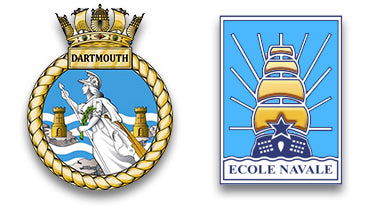
The Modbury Twinning Association members travel annually to Lanveoc and organise a reciprocal visit to Modbury for their twinning partners usually to coincide with the Modbury Fair week in May.
One of the roads in the new housing development at the edge of Modbury has been named Lanveoc Way in honour of the town’s twinning partners.

